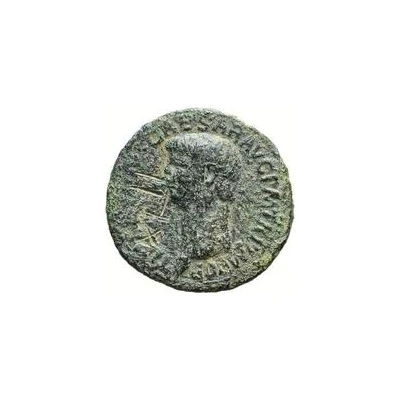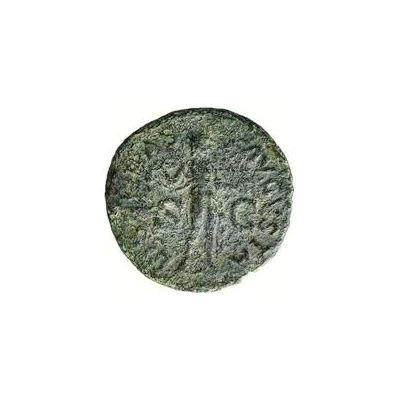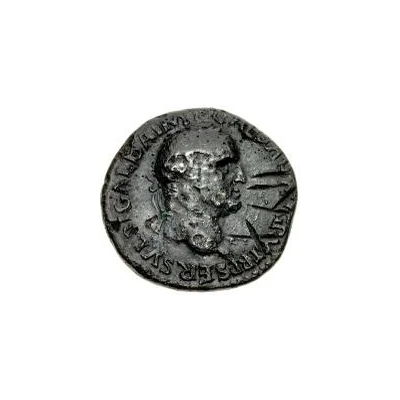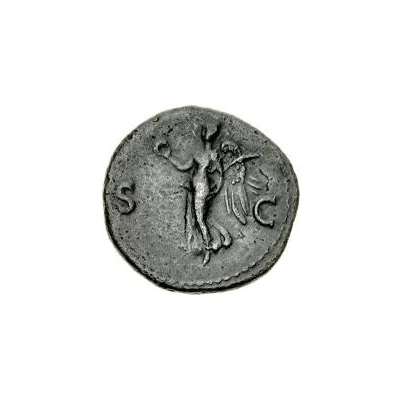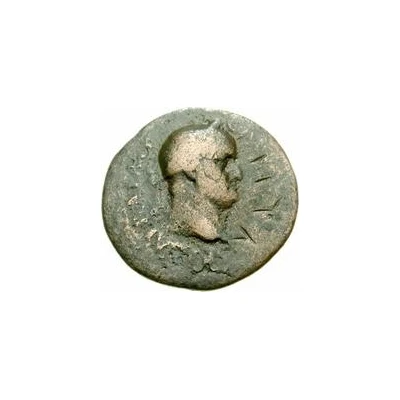
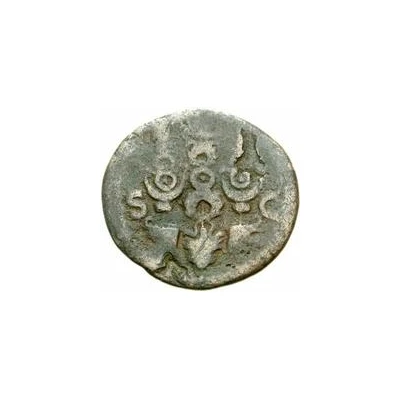

© Classical Numismatic Group, Inc.
42 Nummi Countermark; As of Galba, 68-69; eagle
| Bronze | 8.98 g | 28 mm |
| Issuer | Ostrogothic Kingdom |
|---|---|
| Type | Standard circulation coin |
| Years | 501-553 |
| Value | 42 Nummi = 1⁄12 Siliqua = 1⁄96 Tremissis |
| Currency | Tremissis (490-553) |
| Composition | Bronze |
| Weight | 8.98 g |
| Diameter | 28 mm |
| Shape | Round (irregular) |
| Technique | Hammered, Countermarked |
| Demonetized | Yes |
| Updated | 2024-10-10 |
| Numista | N#166639 |
|---|---|
| Rarity index | 97% |
Reverse
Eagle and trophies with letter on either side.
Script: Latin
Lettering: S - C
Translation:
Senatus Consulto
By Decree of the Senate
Edge
Plain
Comment
These countermarked coins came in two denominations: 42 Nummi and 83 Nummi. While their values are quite odd in comparison to other Ostrogothic coins, these coins were not intended to be used as general nummus pieces, but rather fractions of the Siliqua (1/12 and 1/6 of one, respectively). While these denominations in nummi are not perfectly divisible by the equivalent values in siliquae, these values are as close to the proper divisions as possible.The host coin for this piece is a Rome mint, 1 As struck under Galba (68-69), and these were said to be countermarked in the early- to mid-6th century. With the Ostrogothic Kingdom falling in 553, that is the latest possible end-date.
Around 150 countermarked coins are known, with the vast majority being found in Italy. Because the host coins were minted hundreds of years before the countermarks were applied, it is suggested that a hoard of these host coins were found, which prompted some local mint in Ostrogothic Italy to start countermarking them.
Interesting fact
One interesting fact about this coin is that it was issued during the reign of King Totila (541-552 AD) of the Ostrogothic Kingdom, which was a Germanic tribe that ruled over much of Italy and parts of Europe during the 6th century. The coin features an eagle on one side and the number 42 on the other, indicating its value in nummi, a unit of currency used during that time. Despite being made of bronze, a relatively common metal, this coin is considered a rare and valuable artifact among collectors and historians today.
